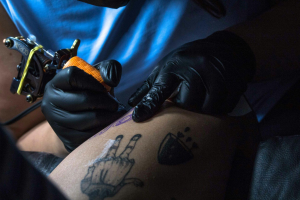
Sydney, Australia, 25 July 2024-Tattoo removal has become increasingly popular as more individuals seek to erase or modify their body art. The reasons behind wanting a tattoo removed can vary greatly, ranging from personal and aesthetic preferences to professional and social considerations. Regardless of the motivation, the process of tattoo removal is complex and requires a thorough understanding of dermatological principles to ensure it is done safely and effectively. This is where dermatologists play a crucial role.
Understanding Tattoos and Their Removal
A tattoo involves injecting ink into the dermal layer of the skin. This ink is designed to be permanent, making removal a challenging process. Over time, tattoo inks have evolved to be more durable and resistant to fading, which, while beneficial for the longevity of tattoos, complicates the removal process. The primary methods for tattoo removal include laser treatment, surgical excision, and dermabrasion. Among these, laser treatment is the most common and generally considered the safest method.
The Role of Dermatologists
Dermatologists are medical doctors who specialize in conditions of the skin, hair, and nails. Their expertise makes them uniquely qualified to handle the complexities of tattoo removal. Here are some key roles dermatologists play in ensuring safe tattoo removal:
1. Initial Consultation and Assessment
Before any removal procedure begins, a thorough consultation is necessary. Dermatologists assess the tattoo, considering factors such as its size, location, colors, and the type of ink used. They also evaluate the patient’s skin type and overall health. This comprehensive assessment helps in determining the most suitable removal method and predicting the number of sessions required.
2. Choosing the Right Removal Technique
Dermatologists are well-versed in various tattoo removal techniques and technologies. Based on the initial assessment, they can recommend the best method for each individual case. For instance, laser removal is highly effective for certain ink colors but may not work as well on others. In some cases, a combination of methods might be necessary to achieve the desired results. If you’re considering tattoo removal Sydney, seeking a qualified dermatologist can ensure the process is safe and effective.
3. Performing the Procedure
Safety and precision are paramount during the tattoo removal process. Dermatologists use advanced laser technologies, such as Q-switched lasers and picosecond lasers, which target the tattoo ink while minimizing damage to the surrounding skin. Their medical training ensures that they can handle the equipment correctly and respond promptly to any complications that might arise during the procedure.
4. Managing Pain and Discomfort
Tattoo removal can be painful, and managing this pain is a critical aspect of the process. Dermatologists can offer various pain management options, including topical anesthetics, local anesthesia, and cooling devices. They also provide guidance on post-procedure care to minimize discomfort and promote healing.
5. Monitoring and Follow-Up
Tattoo removal is rarely a one-time procedure. Multiple sessions are typically required, spaced several weeks apart to allow the skin to heal between treatments. Dermatologists monitor the progress of the removal, adjusting the treatment plan as necessary. They also keep an eye out for any adverse reactions, such as scarring or changes in skin pigmentation, and take steps to address these issues promptly.
Risks and Complications
Like any medical procedure, tattoo removal carries certain risks. Potential complications include infection, scarring, hyperpigmentation (darkening of the skin), and hypopigmentation (lightening of the skin). Dermatologists are trained to minimize these risks and manage any complications that do arise.
1. Infection Control
Dermatologists follow strict hygiene protocols to prevent infections. They ensure that the equipment is sterilized and that the treatment area is clean. Patients are also given clear instructions on how to care for the treated area to avoid infections.
2. Minimizing Scarring
One of the primary concerns with tattoo removal is the risk of scarring. Dermatologists use techniques that minimize trauma to the skin and promote proper healing. They also provide aftercare recommendations, such as using specific ointments and avoiding sun exposure, to reduce the risk of scarring.
The Importance of Professional Care
While there are over-the-counter tattoo removal products and services offered by non-medical practitioners, these options often carry higher risks and may not be as effective. Dermatologists have the medical training and expertise to ensure that tattoo removal is done safely and effectively. They can tailor the treatment to the individual’s unique skin type and the specifics of the tattoo, significantly improving the chances of a successful outcome.
Conclusion
The role of dermatologists in safe tattoo removal cannot be overstated. Their expertise ensures that the process is conducted safely, minimizing risks and complications. If you are considering tattoo removal, seeking the guidance and care of a qualified dermatologist is essential. They can provide a comprehensive evaluation, recommend the most appropriate removal technique, and guide you through each step of the process, ensuring the best possible outcome for your skin.
Media Contact
Company Name: Removery
Contact Person: Tom Weber
Email: care-au@removery.com
Country: Australia
Website: https://removery.com/

